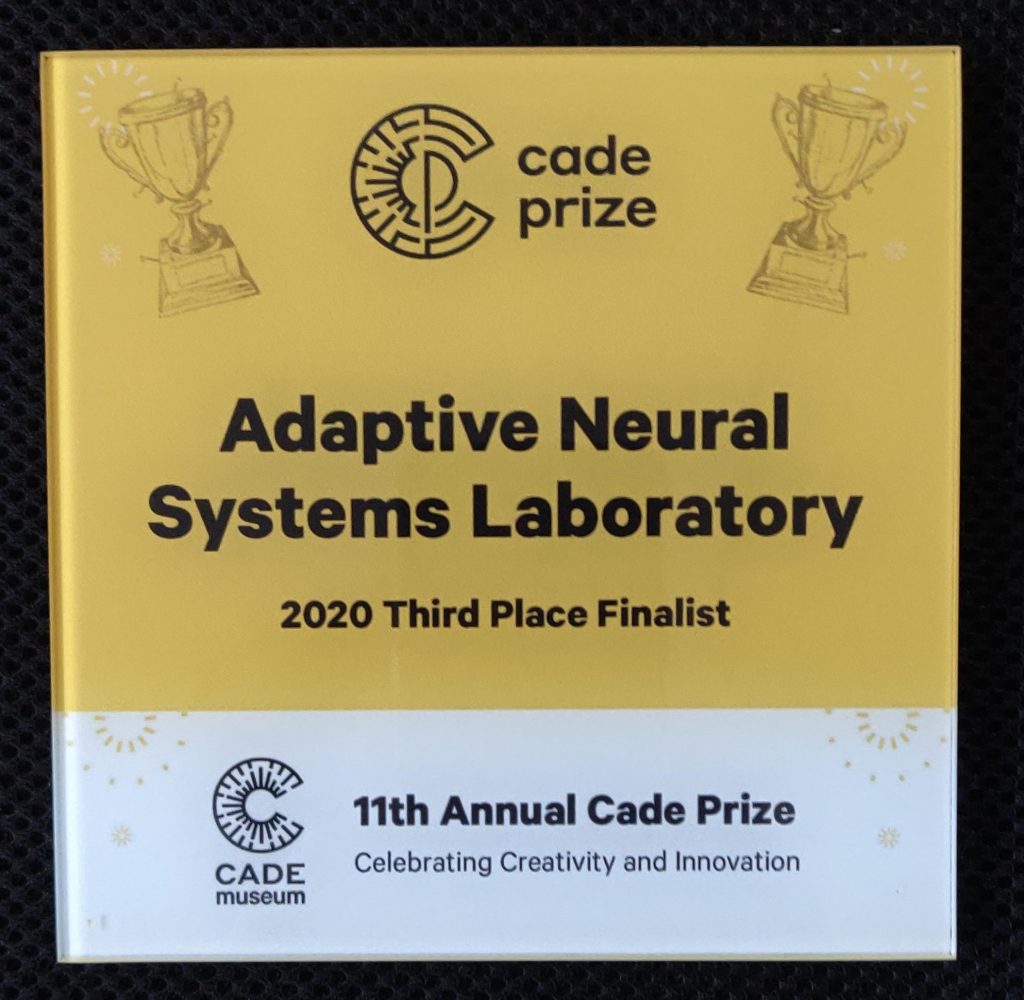Ranu Jung, eminent scholar professor and chair of the Department of Biomedical Engineering, and her Adaptive Neural System Lab (ANSL) team was recently named a 2020 Cade Prize winner.
Given by the Cade Museum for Creativity and Invention, the Cade Prize awards inventors and entrepreneurs who demonstrate a creative approach to addressing problems in their field of expertise, resulting in an innovative invention. This is the eleventh year of the Cade Prize, and the first year that the competition was opened beyond Florida research universities and companies to include Alabama and Georgia applicants.
Jung is also a co-PI on FIU ADVANCE, a five-year, $3.2 million Institutional Transformation grant awarded in 2016 by the National Science Foundation for FIU to develop innovative organizational change strategies to produce comprehensive change across all STEM disciplines.

Under the direction of Jung, the ANSL team won for developing the pioneering neural-enabled prosthetic hand (NEPH) investigational device system, which restores a sense of touch/grasp force and hand opening by stimulating sensory nerve fibers in the residual limb with fine wires implanted inside nerves, allowing amputees to “feel” again.
“We were all very happy upon learning we had won the award,” says Jung. “I was not only honored, but elated that the efforts of the entire team, their persistence, hard work, and passion, were recognized.”
It’s been 31 months since the first participant had the NEPH system implanted, and he’s been at home for just over two years. Last fall, the ANSL was awarded $6 million by the Department of Defense to expand feasibility testing of the system to military veterans and other amputees. The team is currently recruiting subjects for the trial. After being formally screened and officially enrolled, participants will have the implant inserted and will undergo a personalized fitting process. After regular check-ins at the lab, they will ultimately take the system home to test their ability to accomplish both everyday, standardized tasks and specific tasks.
While there are other organizations and groups who have experimented with similar systems and procedures, no one else apart from the ANSL has implanted an entire wireless system, and no other participant has been working with an implanted wireless system for as long as they have.
The NIH Concept to Clinic: Commercializing Innovation (C3i) Program has also been an integral part of the ANSL’s long-term plans. The program provides medical device innovators with the specialized business frameworks and essential tools for successful translation of biomedical technologies from the lab to the market. “The Cade prize comes at an opportune time,” says Jung. “It’s helped us shape how we think about taking the NEPH system to a commercial stage, because we want this innovation to become available to everyone.”
